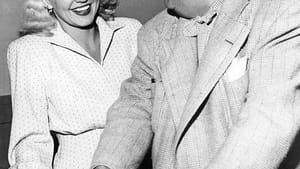Stay in the Loop
BSR publishes on a weekly schedule, with an email newsletter every Wednesday and Thursday morning. There’s no paywall, and subscribing is always free.
A showbiz legend and a piece of work
'Is That All There Is? The Strange Life of Peggy Lee' by James Gavin

The late songstress Peggy Lee was, by all accounts, a certifiable piece of work. However difficult, cruel, temperamental, and downright wifty she might have been, the “queen of the supper clubs” nevertheless was a supremely talented singer and lyricist, and her body of work, created over five decades, certainly qualifies her as a show business legend.
There have been a few books written about Peggy Lee — Miss Peggy Lee, as she insisted upon being called — including her own glossy and inaccurate autobiography, first published in 1989 and republished in 2002. But James Gavin’s new book, Is That All There Is? The Strange Life of Peggy Lee, is, without a doubt, definitive.
Gavin, who also wrote superb bios of Lena Horne and Chet Baker, is meticulous in his detail and in his research, and he apparently spoke to just about every musician, friend, colleague, and family member still living. What emerges here is a portrait of a very talented and unique innovator who was also very, very disturbed.
Born Norma Deloris Egstrom in Jamestown, North Dakota, she had a childhood that, by all accounts, wasn’t easy, but, Gavin says, was nowhere near the terribly abusive one she claimed to have had at the hands of her stepmother. Lee created a lot of myths over the years; this was the biggest.
Whatever hurt was deeply buried within her, and whatever the cause, it affected her personal and professional life, to say nothing of her always fragile health, for years. Among other things, she was married and divorced four times, was an alcoholic and abuser of prescription drugs, a hypochondriac, an inveterate litigator, a control freak with little regard or loyalty to the people who worked for her for years, and a true eccentric who often appeared to be, quite simply, in a fog. You’ve got to figure something is amiss with someone who stays in bed for years at a time.
Words and music
Despite all of that, there were the songs she sang and the lyrics she wrote, and that is what she’ll be remembered for. And that is as it should be. Her professional breakthrough came with Benny Goodman’s band in 1941; she had her first hit record the following year and had a megahit in the form of “Why Don’t You Do Right?” a year later. And the hits kept coming, songs like “Mañana,” “Lover,” “Fever,” and 1968's “Is That All There Is?” Though her voice got smaller through the years — and it never was a big instrument to begin with — she always showed the direct influence of Billie Holiday, albeit a stripped down and more erotic-sounding Lady Day.
As a lyricist, Lee will likely be best remembered for her contributions to Disney’s Lady and the Tramp and songs like “It’s a Good Day,” “I Love Being Here with You,” and “I’m Gonna Go Fishin’,” the latter composed with Duke Ellington.
She was also quite the industry pioneer. Lee was among the first woman to write for films, helped create the “concept album,” and, in her lawsuit filed against Disney (Disney was not paying any additional royalties to Lee when Lady and the Tramp was released on home video), forever changed the way that musical artists were compensated for their work.
Though not a musician, the author deserves credit for his observations about Lee’s musicality as well as the singular contributions of her accompanists — who were some of the greatest jazz musicians who ever lived. Painstakingly researched and beautifully written, Is That All There Is? is at times touching, sad, disturbing, and hilarious. Just like Peggy Lee.
The one minor error I could find actually has to do with Philadelphia. Peggy Lee was a regular at our very own Latin Casino, but the author places Lee’s 1958 Latin Casino appearance in Cherry Hill when it was still at 13th and Walnut Street. These things happen.
What, When, Where
Is That All There Is? The Strange Life of Peggy Lee by James Gavin. Atria Books, 2014: 608 pages. Amazon.com
Sign up for our newsletter
All of the week's new articles, all in one place. Sign up for the free weekly BSR newsletters, and don't miss a conversation.

 Bruce Klauber
Bruce Klauber